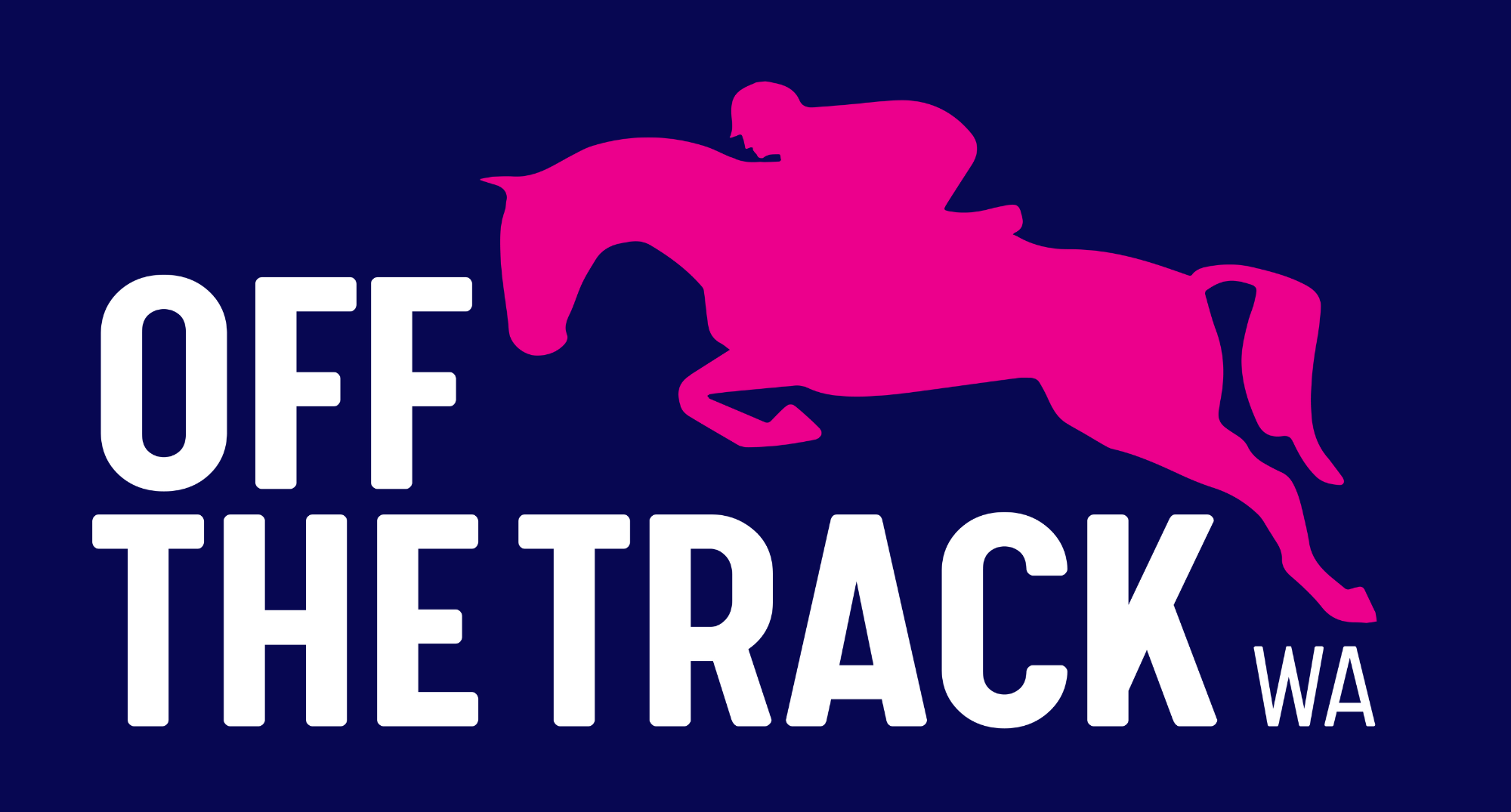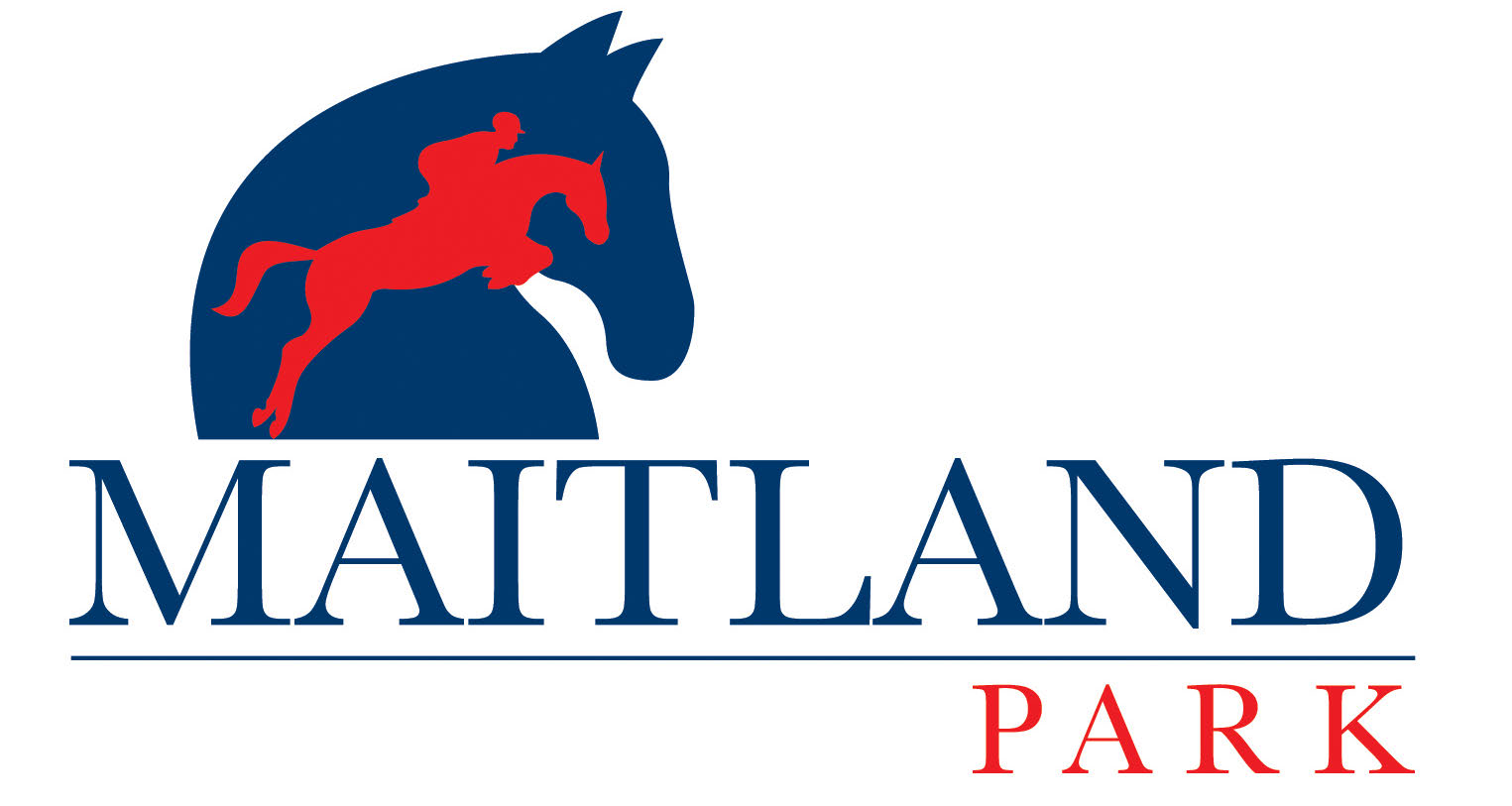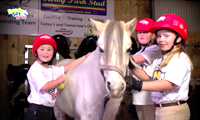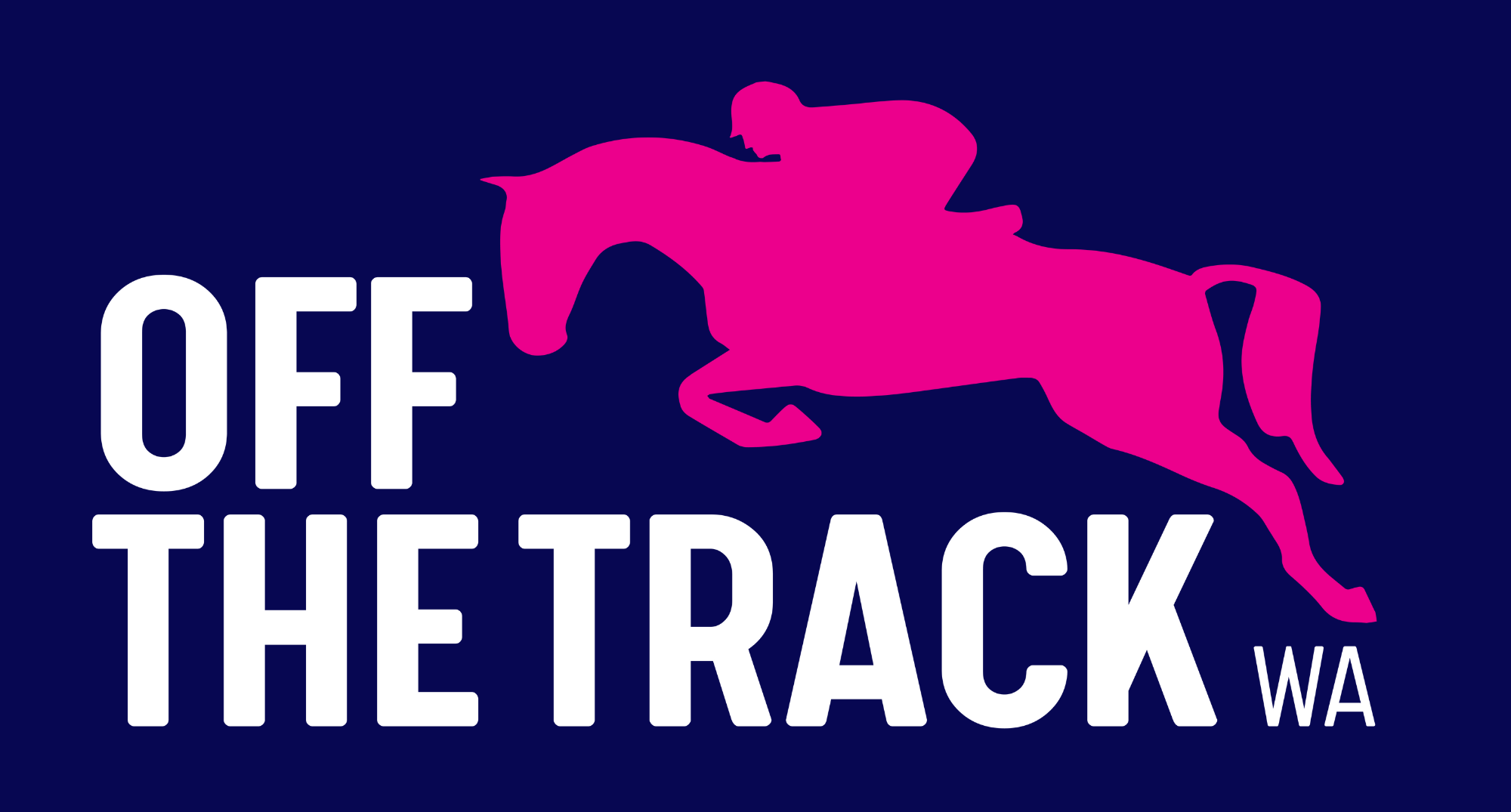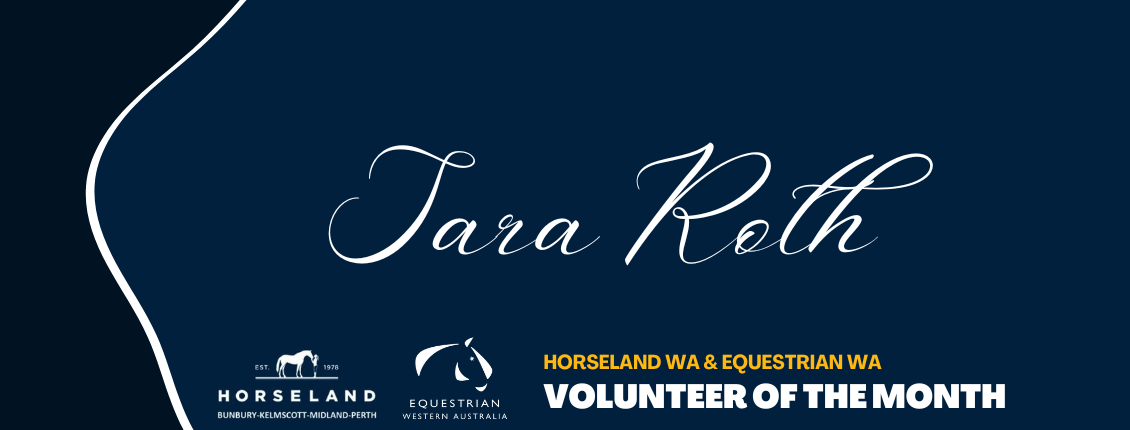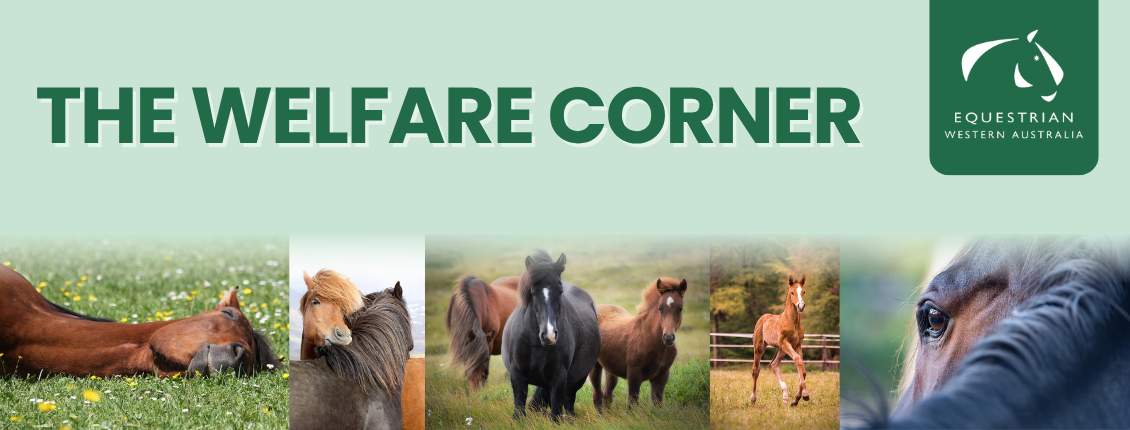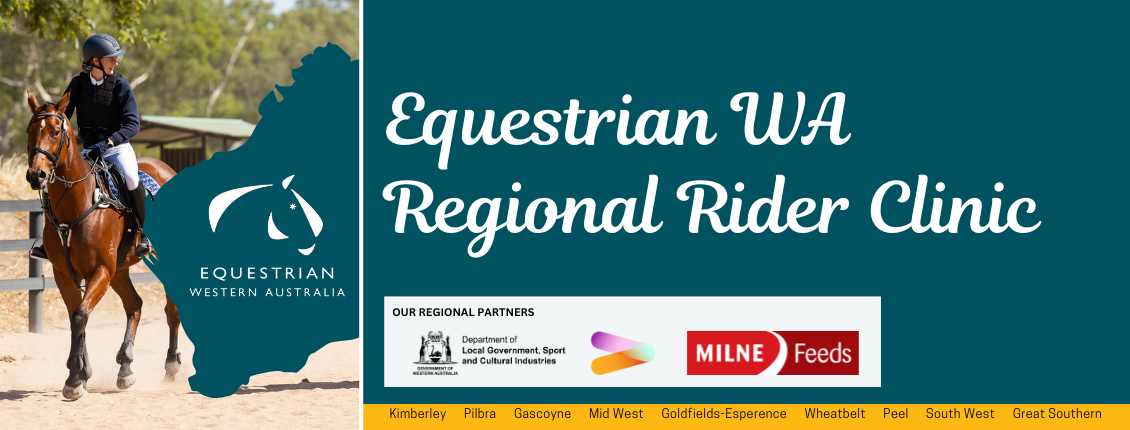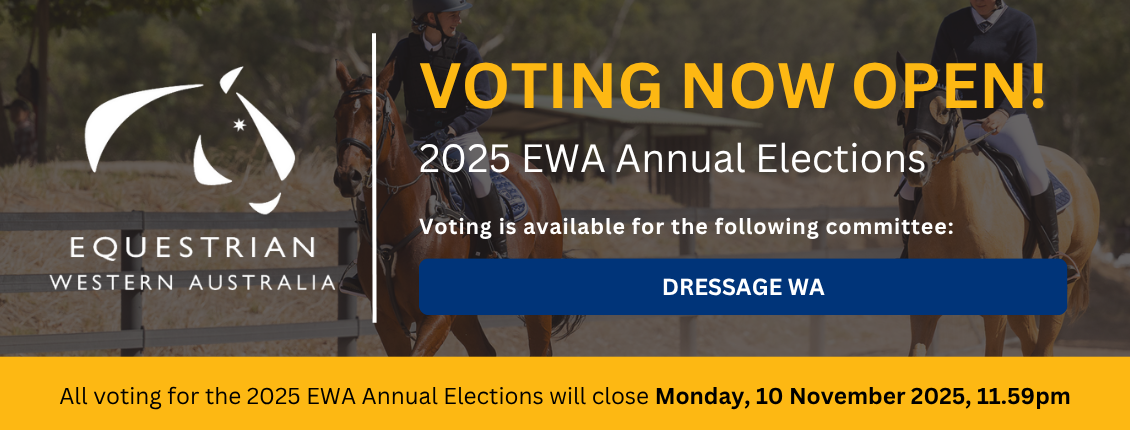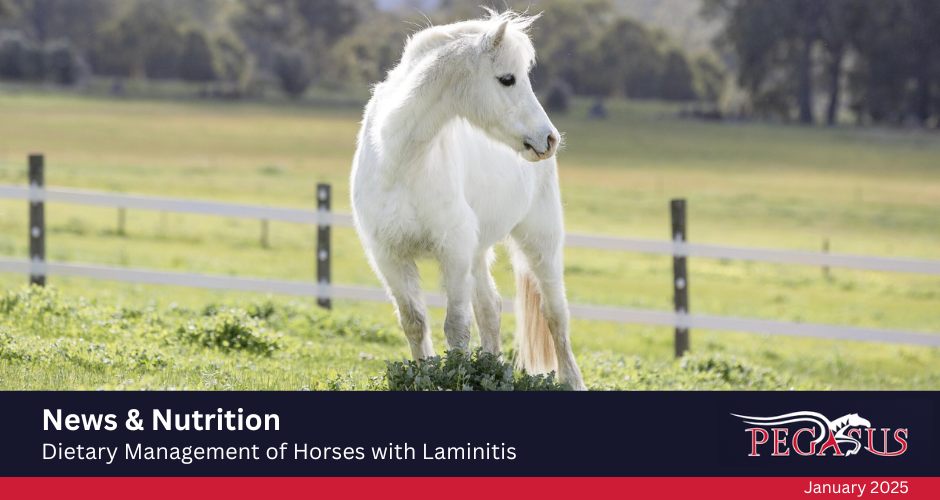
Pegasus News & Nutrition
Dietary Management of Horses with Laminitis
Many horse owners will have dealt with a case of laminitis at some point, particularly during spring. Laminitis is a painful condition of the hoof where the laminae begin to separate from the hoof wall. In severe cases, rotation of the pedal bone can occur. Whilst the exact reason this condition manifests in the hoof is still somewhat unknown, causal factors, risk factors and preventative measures are well documented. Here we take a look at dietary management of feed-related laminitis.
There are many causes of laminitis: diets high in starch/sugar, obesity, sudden access to grain (i.e. the pony that escapes and spends the night in the feedroom!), metabolic disease (EMS, Insulin Dysregulation, hyperinsulinemia), some medications, and injury (compensatory weight bearing on one limb). One of the most commonly experienced triggers is high quality spring pasture. Lush pasture, with high fructan (sugar) content, consumed at high intake, can cause obesity, along with an upset to the delicate microbial balance in the hindgut, resulting in a cascade of events that lead to laminitis. Pasture high in non-structural carbohydrates (NSC) can also exacerbate hyperinsulinemia and trigger an episode. Any horses or ponies with acute laminitis require immediate veterinary attention at the onset. Removal of the causative factor, such as pasture or dietary factors, is important. Recovery can be prolonged and requires continuous medical and dietary management to bring the condition under control, reduce pain and possible damage to hoof structure, and prevent future recurrence.
Dietary Management
During the acute stages, access to pastures and feeds high in non-structural carbohydrate (NSC) should be prevented. Grains should be avoided, along with high sugar treats such as molasses. Aside from pasture, dry forage should also be considered. Low NSC hays, such as Rhodes grass hay and low sugar meadow hay, should be used in preference to high NSC forage, such as oaten hay. It is important to remember not to starve the horse, even if he/she is overweight. In some cases, an inclusion of barley straw (up to 50%) can be a good way to reduce calorie intake whilst still giving the horse roughage intake that extends chewing time and alleviates boredom. Energy intake should be reduced, controlled and monitored to enable safe weight loss. Seeking the guidance of an equine nutrition advisor can assist with this. During the acute stage, horses still require energy, protein, amino acids, minerals and vitamins to assist with recovery. This can be achieved by providing good quality low carbohydrate hay, along with water and a vitamin and mineral supplement. A low NSC fibre supplement, such as beet pulp, soy hulls, or AllFibre can be useful to mix in to help horses consume their supplements and encourage water intake.
Once the condition has stabilised, suitable feeds can be gradually added back in. The focus is on meeting nutritional requirements through low starch feeds (Pegasus Liberty, Pegasus Lite) depending on the horse’s body condition and metabolism. Good doing horses are best kept on a restricted calorie diet making use of a concentrated feed, such as Pegasus Lite, whilst those requiring weight gain can be fed Pegasus Liberty, which contains additional fats. The diet should have a low NSC forage base. Take particular care when it comes to pasture. All the good work done feeding an appropriate concentrate and hay can be undone by turning the horse out on high quality pasture. As sugar content in the pasture increases with daylight hours, turnout is best done during the very early hours of the morning, with horses being brought in mid-late morning. Use of a grazing muzzle, strip grazing or dry lot are necessary management tools to limit intake when pasture is abundant.
Quick Tip: if the laminitis is related to hindgut acidosis, e.g. grain overload, digestive upset or pasture, stabilise hindgut pH and bacterial populations by limiting carbohydrate intake from pasture or concentrates and supplementing with a hindgut buffer such as KER EquiShure.
All Pegasus feeds, and KER Triacton, contain KER BMC™, which is a powerful gastric and hind gut acid buffer and can raise pH above risk thresholds for extended periods. A hoof supplement, such as KER Bio-bloom, is a good way to improve hoof growth and strength.
Prevention is better than cure
As always, preventing a case of laminitis is the best practice. Matching the diet to the individual horse’s age, temperament, workload, body condition score and metabolism, with the correct type of fuel source is essential. Paying particular attention to pasture and seasonal changes is also important, as some years produce better pasture than others, due to favourable growing conditions. Be aware, and realistic, about body condition. Whilst a nice chubby horse may look well-cared for, there are a considerable number of diseases associated with being overweight. Keep an eye out for fatty deposits and ribs that can’t easily be felt. By the time the horse has developed a cresty neck, it may well be too late.
A previous bout of laminitis increases the risk of future occurrences. To prevent recurrence horses predisposed to laminitis require careful, ongoing dietary management. Risk factors include periods such as autumn/springtime when pasture is high in fructan content, high NSC hay varieties, grains and sweet feeds.
Diet analysis is an effective way to ensure energy, protein, vitamin and mineral requirements are being met from the feed sources appropriate for laminitis-prone horses. For more information, contact our Equine Nutrition Advisor, Michelle Meylan.

